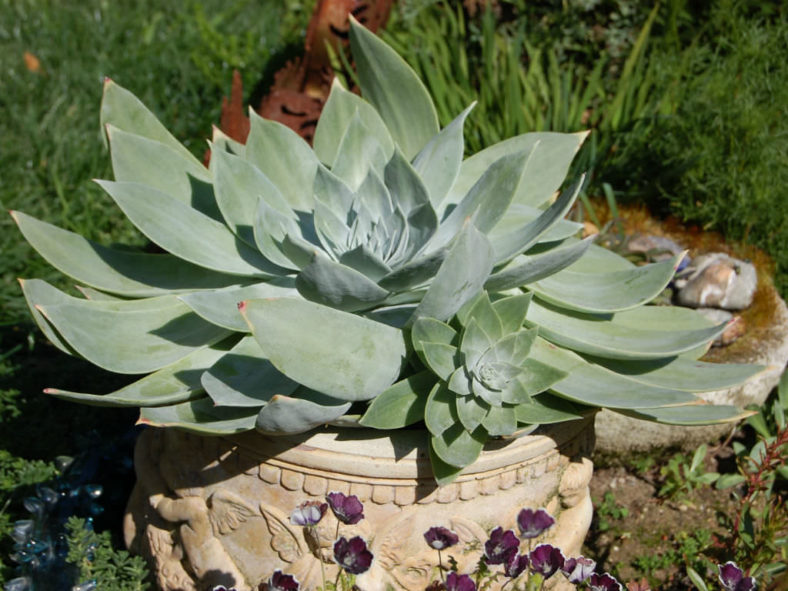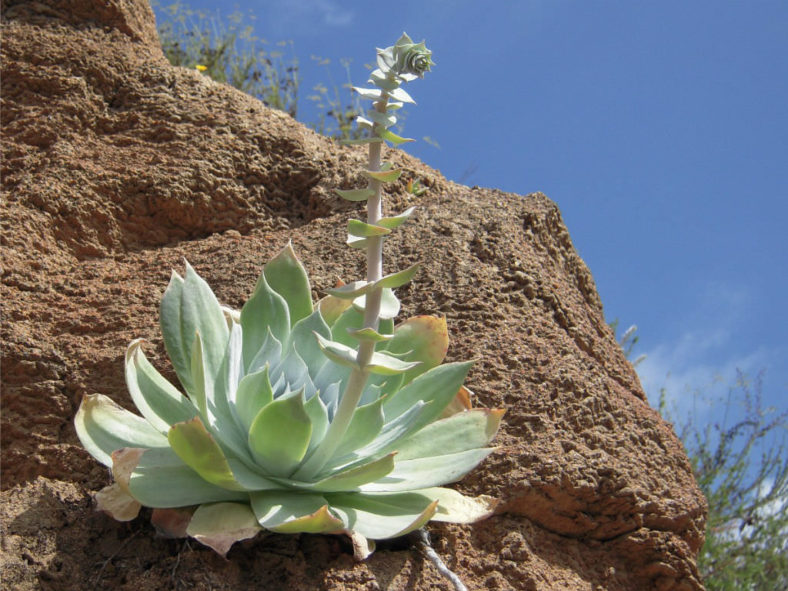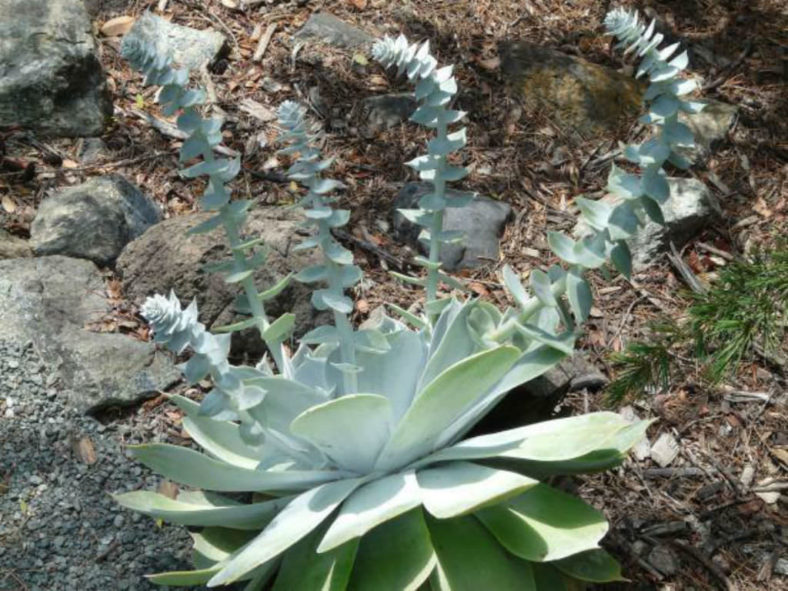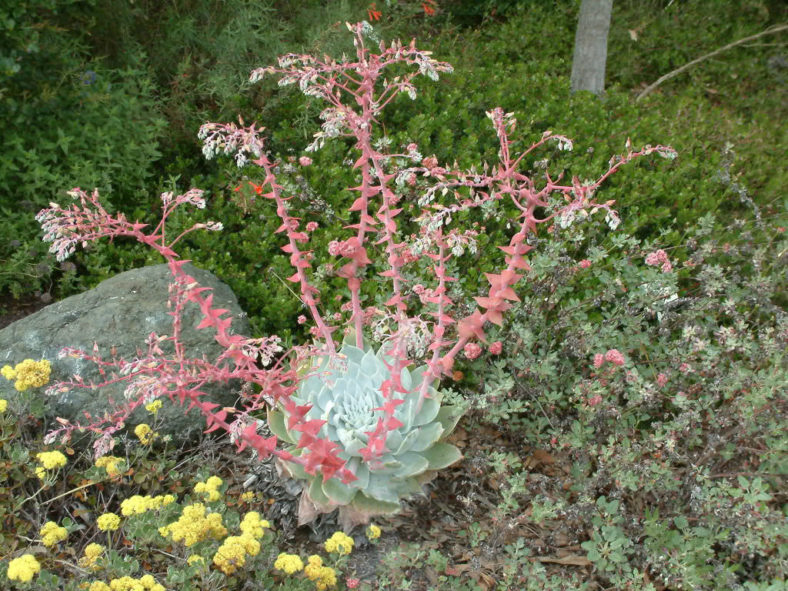Scientific Name
Dudleya pulverulenta (Nutt.) Britton & Rose
Common Name(s)
Chalk Dudleya, Chalk Lettuce, Chalk Liveforever,
Synonym(s)
Cotyledon pulverulenta, Echeveria pulverulenta
Scientific Classification
Family: Crassulaceae
Subfamily: Sempervivoideae
Tribe: Sedeae
Genus: Dudleya
Etymology
The specific epithet "pulverulenta" (pronounced "pul-ver-oo-LEN-tuh") means "dusty, pulverulent, full of dust, dust-raising, resembling a cloud of dust". It refers to the powdery farina on the leaves of this species.
Origin
Dudleya pulverulenta is native to the southwestern United States and northern Mexico. It grows on rocky cliffs, canyons, and slopes at elevations of up to 4,920 feet (1,500 m).
Description
Dudleya pulverulenta is a succulent plant with a thick caudex densely covered with old leaves and a large rosette of chalky white leaves at its top. The caudex is initially erect, becoming decumbent with age, and can reach a diameter of 3.6 inches (9 cm). The rosette usually has 40 to 60 leaves and can grow up to 2 feet (60 cm) in diameter. The leaves are oblong and pointed, usually broadest at the base or the upper 1/3, measuring up to 12 inches (30 cm) in length and 5.2 inches (13 cm) in width. They have a thick, powdery coating of natural wax.
The deep red flowers appear in winter to early spring in clusters on stalks that can grow up to 3.3 feet (1 m) long. All parts of the inflorescence are also covered in chalky wax.

How to Grow and Care for Dudleya pulverulenta
Hardiness: USDA hardiness zones 8a to 11b: from 10°F (-12.2°C) to 50°F (10°C).
Most of the habitats Dudleyas occupy become dry in summer. Therefore, cutting off water to Dudleyas in your garden during summer is essential. Plants grown in sandy soils or containers are exceptions. They will accept infrequent summer watering as long as the soil drains well. The onset of fall or winter rains reawakens Dudleyas from drought-induced dormancy. Their shriveled leaves plump up quickly, growth resumes, and flowering occurs during the following spring or summer. These plants are amazingly resilient. If a portion of a colony sloughs off a cliff face or is uprooted by a burrowing animal, it can persist for months until soil contact is re-established. Species that naturally grow on ocean bluffs are also salt-spray tolerant.
Dudleyas have their share of disease and pest problems. However, if you can prevent Argentine Ants from introducing mealybugs or aphids into your Dudleyas, your Dudleyas will be healthier. Mealybugs nestle in the deep recesses of the leaves, and their feeding weakens the plants.
Learn more at How to Grow and Care for Dudleya.
Links
- Back to genus Dudleya
- Succupedia: Browse succulents by Scientific Name, Common Name, Genus, Family, USDA Hardiness Zone, Origin, or cacti by Genus
Photo Gallery
Click on a photo to see a larger version.


